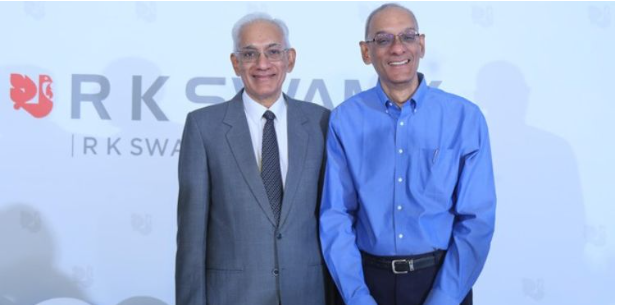
The announcement that CBS will cancel The Late Show with Stephen Colbert by 2026 has sparked a wave of speculation about the future of late-night television. The news, which came shortly after CBS’ parent company Paramount Global secured approval for its merger with Skydance Media, has led many in the media industry to ask: Is this a one-off cancellation or a sign of things to come for late night TV?
Late Night Television Under Pressure
The traditional late-night talk show format, once a cornerstone of network television, is facing increasing financial and cultural headwinds. The cost of producing late-night shows has skyrocketed, while viewership and ad revenue have declined as consumers migrate to streaming platforms and social media.
Paramount claims that Colbert’s departure was a financial decision, not a response to content or ratings. But many observers believe the decision reflects larger structural shifts in the media landscape.
“The cancellation wasn’t about Colbert’s performance,” said one media analyst. “It’s about whether the format still makes sense in a post-linear world.”
Financial Realities Behind the Decision
Sources say The Late Show employed approximately 200 people and lost around $40 million annually. Though the show consistently pulled in the highest ratings at 11:35 p.m., Colbert’s viewership — around 1.9 million — has steadily declined, especially among younger audiences.
Paramount isn’t alone. NBC’s suite of late-night programming — including The Tonight Show Starring Jimmy Fallon, Late Night with Seth Meyers, and Saturday Night Live — reportedly loses over $100 million per year when measured against traditional TV ad revenues.
Even Jimmy Kimmel Live on ABC, despite its cultural relevance and 250 employees, is technically unprofitable when judged by linear advertising standards. Yet, all these shows become more financially viable when factoring in digital streaming, YouTube clips, and affiliate revenue from carriage deals.
Is Jimmy Kimmel Next?
Much speculation now centers on Jimmy Kimmel, whose contract with Disney expires in 2026. Kimmel’s show has been a staple of late night since 2003, and plays a strategic role in Disney’s marketing machine, often promoting new releases from Marvel, Star Wars, and Pixar.
With over 20 million YouTube subscribers, Jimmy Kimmel Live has seen higher digital engagement than its rivals, despite a smaller subscriber base than The Tonight Show. But its future depends heavily on whether Disney still sees late-night TV as a valuable distribution tool.
“Kimmel is more integrated into Disney’s ecosystem than Colbert was at CBS,” said one insider. “But that may not be enough if the economics don’t improve.”
NBC Betting on Fallon and Meyers—For Now
While CBS pulls back and Disney faces decisions, NBC is doubling down on its two marquee late-night hosts. The network recently extended contracts for Jimmy Fallon and Seth Meyers through 2028, signaling its belief in the enduring value of the format—at least in the short term.
NBC has made budgetary adjustments to reduce costs: Fallon now airs only four nights a week, and Meyers no longer features a live band. NBC has also reported a 34% increase in ad revenue for The Tonight Show when factoring in digital and streaming distribution.
Changing Audience Habits
Viewership demographics tell a sobering story. Colbert’s core audience is aged 65 and older, according to Nielsen. Kimmel’s show also saw a significant dip in average viewers — down to 1.6 million for the 2024–2025 season. These numbers reveal a broader challenge: younger viewers are no longer tuning into linear TV at 11:30 p.m.
Instead, these audiences engage through social media clips, YouTube highlights, and streaming platforms — often watching bite-sized content on demand, rather than sitting through an hour-long nightly broadcast.
Advertising Dollars Are Fleeing Late Night
Late night isn’t just facing a cultural shift — it’s also losing economic support. Paramount’s Q1 ad revenue dropped 21%, while Disney’s linear networks declined 3% in the same period. Industry experts say most remaining advertising revenue is flowing to live sports, which guarantees mass audiences and reliable ratings.
NBCUniversal’s record-breaking upfront ad sales were largely attributed to its sports lineup, including the Olympics, NBA, and Super Bowl — not its entertainment programming.
After Midnight and the Search for a Younger Audience
CBS tried to court younger audiences with After Midnight, hosted by comedian Taylor Tomlinson. The show focused on viral internet culture and was designed to follow Colbert’s program. But despite CBS’ interest in renewing it, Tomlinson opted not to return, and the show was canceled.
Is Late Night TV Dying?
CBS maintains that Colbert’s cancellation is an isolated financial decision. However, the industry-wide trends tell a different story. The combination of:
- Declining linear viewership
- Escalating production costs
- Advertisers shifting to sports and streaming
- A growing reliance on digital distribution
…means late-night television as we’ve known it for decades is now on unstable ground.
What happens next will depend largely on Disney’s decision about Kimmel in 2026 and whether NBC’s investment in Fallon and Meyers pays off. One thing is clear: the late-night format is at a crossroads.




